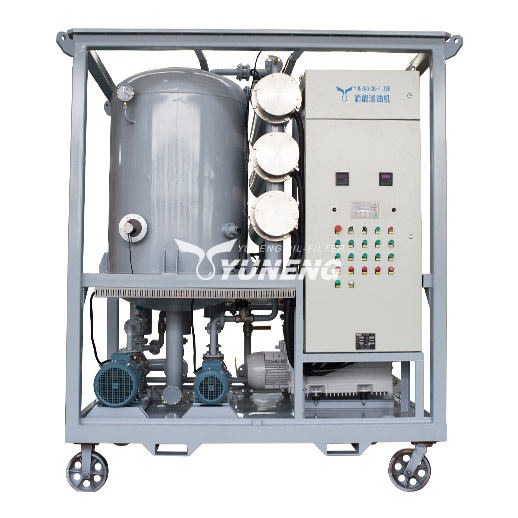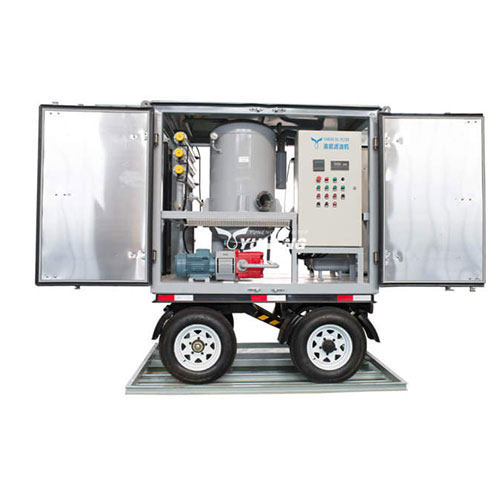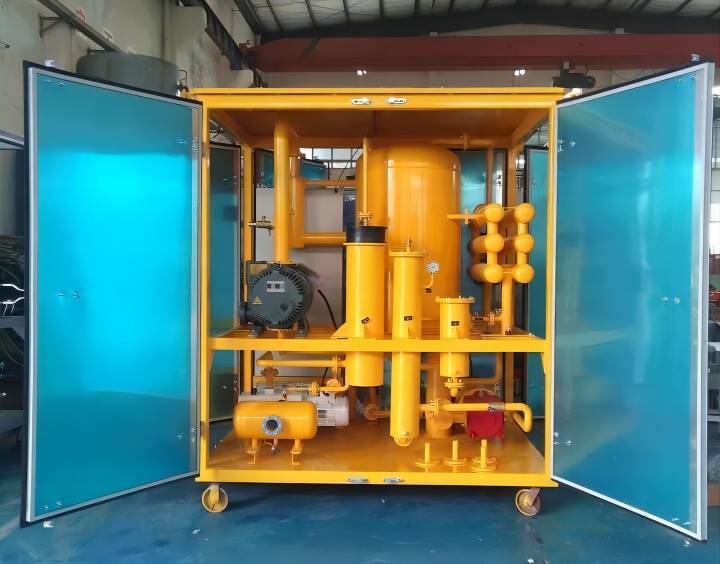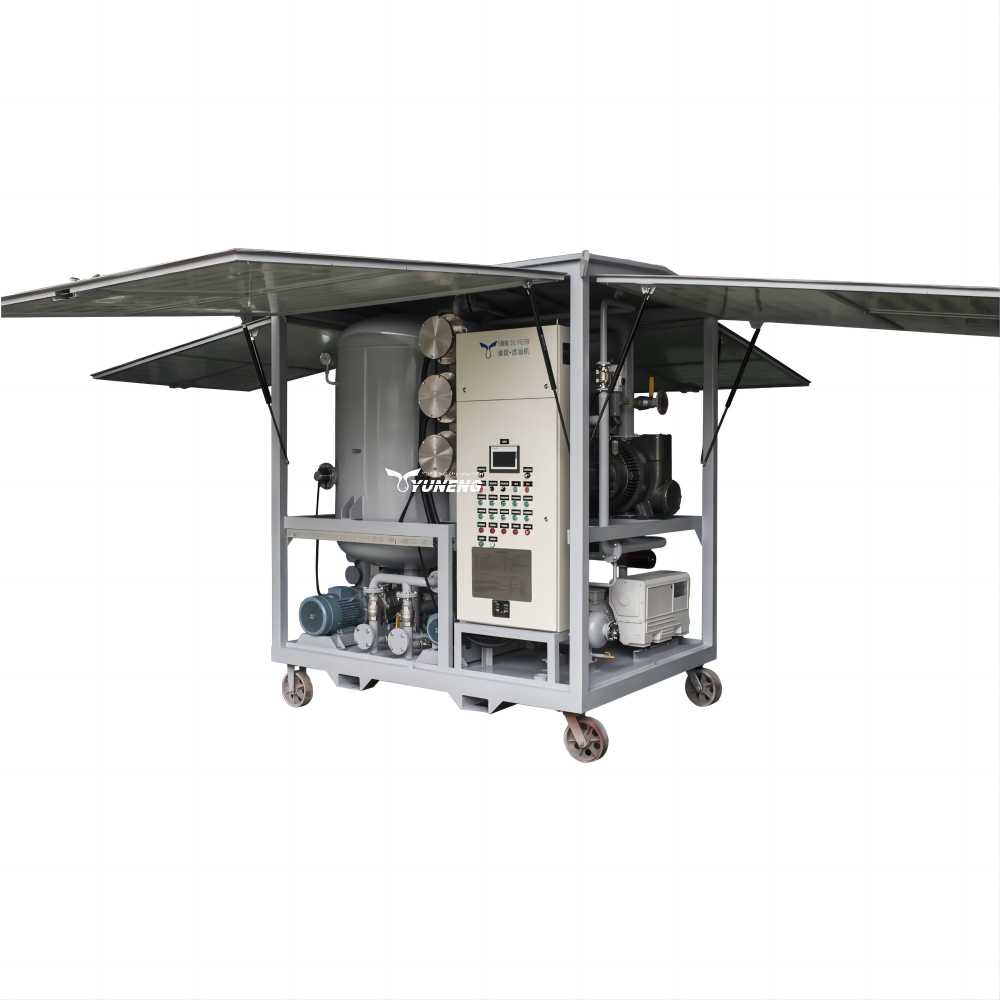Choosing the Right Transformer Oil Purification: A Guide for Every Need
Transformers are crucial components in power distribution systems, and ensuring the longevity and optimal performance of these transformers requires effective maintenance, including transformer oil purification. This process plays a pivotal role in extending the life of the transformer and preventing issues associated with contamination. In this comprehensive guide, we will delve into what transformer oil purification entails, explore various purification methods, discuss the factors influencing the choice of purification method, and introduce Yuneng as a trusted supplier of transformer oil purifiers.

What is Transformer Oil Purification
Transformer oil purification is a crucial process aimed at enhancing the quality and performance of insulating oil used in transformers. Transformer oil, also known as insulating oil or dielectric oil, plays a pivotal role in electrical transformers by providing insulation, cooling, and arc-quenching properties. Over time, this oil can become contaminated with moisture, gases, particulate matter, and other impurities, compromising the efficiency and reliability of the transformer.
Transformer oil purification involves the removal of these contaminants through various methods such as filtration, vacuum oil purification, centrifugation, and adsorption. The goal is to restore the oil to its optimal condition, ensuring that it maintains its dielectric strength and thermal conductivity. Purifying transformer oil not only extends the lifespan of the transformer but also prevents potential failures, improves energy efficiency, and enhances overall operational performance. Regular purification is a vital maintenance practice in power systems to guarantee the longevity and reliability of transformers.
Types of Transformer Oil Purification Methods

Transformer oil plays a crucial role in the efficient operation of transformers by providing insulation and cooling. However, over time, the oil can become contaminated with impurities like moisture, dissolved gases, and particulate matter, compromising its performance and lifespan. To counteract this, regular transformer oil purification is essential. Here’s a breakdown of the different types of transformer oil purification methods:
1. Filtration
- Function: Removes physical contaminants like dirt, sludge, and metallic particles from the oil.
- Types:
- Coarse filtration: Utilizes large-pore filters to remove larger particles.
- Fine filtration: Employs smaller-pore filters to capture finer particles.
- Depth filtration: Uses deep-bed filters like pleated cartridges to trap even the smallest particles.
2. Dehydration
- Function: Extracts dissolved water from the oil, which can cause electrical breakdown and corrosion.
- Methods:
- Vacuum dehydration: Uses a vacuum pump to create low pressure, causing water to evaporate from the oil.
- Desiccant dehydration: Employs desiccants (moisture-absorbing materials) to capture water molecules from the oil.
3. Degasing
- Function: Removes dissolved gases like nitrogen and oxygen from the oil, which can accelerate oxidation and reduce insulation strength.
- Methods:
- Vacuum degasification: Similar to vacuum dehydration, but with a focus on removing dissolved gases.
- Spray degasification: Oil is sprayed into a vacuum chamber, causing dissolved gases to expand and separate from the oil.
4. Acid neutralization
- Function: Neutralizes acidic compounds in the oil, which can result in corrosion and reduced insulation strength.
- Methods:
- Fullers earth treatment: Uses clay-based adsorbent to remove acidic impurities.
- Chemical neutralization: Employs specific chemicals to neutralize specific acidic compounds.
5. Combined methods
- Function: Combines multiple purification methods for comprehensive oil cleaning.
- Benefits: Provides the most effective oil purification, addressing a wider range of contaminants.
By understanding the different types of transformer oil purification methods and their applications, you can choose the best approach to maintain the health and performance of your transformers. Remember, regular oil purification is a crucial investment that can extend the lifespan of your transformers and ensure their efficient operation.

Factors Influencing the Choice of Purification Method
Careful consideration of various factors is essential when selecting an appropriate transformer oil purification method. The transformer’s specific needs, the type and degree of contamination, and the operational environment all contribute significantly to determining the most suitable purification approach. Here are key considerations to take into account:
1. Transformer Size and Capacity
The size and capacity of the transformer are pivotal factors influencing the selection of a purification method. Larger transformers may necessitate more advanced techniques to ensure comprehensive and effective treatment.
2. Contamination Type
Identifying the specific type of contamination in the transformer oil is critical. Different purification methods are designed to target distinct impurities, and a clear understanding of the contamination’s nature facilitates the selection of the most appropriate technique.
3. Operational Environment
The operational conditions of the transformer, encompassing factors like temperature, humidity, and load, have a significant impact on the choice of purification method. Certain methods may prove more effective under specific environmental conditions.
4. Budgetary Constraints
The allocated budget for maintenance and purification activities is a crucial consideration. The decision-making process is influenced by budgetary constraints, as some purification methods may offer more cost-effective solutions based on specific requirements.
5. Downtime Considerations
The allowable downtime for the transformer is a key factor in determining the purification method. Different techniques may have varying completion times, affecting the operational availability of the transformer. Balancing downtime constraints with purification effectiveness is vital in the decision-making process.

Yuneng: Your Trusted Transformer Oil Purifier Supplier
Yuneng is a leading provider of high-quality transformer oil purification equipment, offering a range of solutions tailored to diverse transformer needs. With a commitment to innovation and excellence, Yuneng’s transformer oil purifiers are designed to address varying levels of contamination and ensure the optimal performance of transformers.
Yuneng’s offerings include ZJA Double Stage Transformer Oil Filtration Machine, ZJB Single Stage Transformer Oil Purification Plant, Transformer Oil Dehydration Machine, etc. These state-of-the-art technologies are backed by a team of experts and a commitment to quality, making Yuneng a trusted partner for transformer oil purification needs.
Conclusion
Selecting the right transformer oil purification method is vital for sustaining power transformers’ reliability and lifespan. Considerations like oil type, contamination levels, transformer size, and operational needs are crucial in this decision. Yuneng, a trusted and innovative supplier, offers a diverse range of transformer oil purifiers to meet various requirements. By investing in the right purification method and partnering with Yuneng, industries can ensure optimal transformer performance and mitigate risks associated with contaminated insulating oil. This strategic investment aligns with specific transformer needs, ensuring longevity and reliability while benefiting from Yuneng’s commitment to innovation and reliability.
